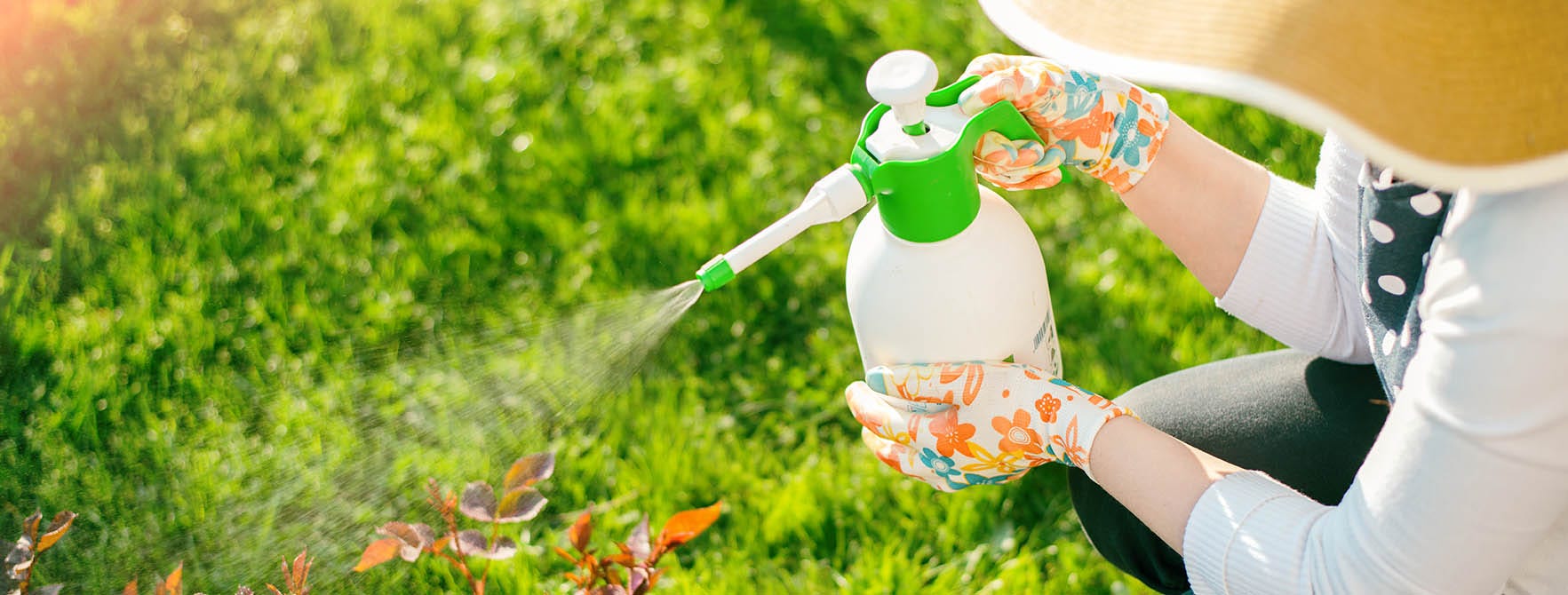
Gardens are notorious for harboring hungry pests intent on nothing but filling their bellies with all of the plants you so carefully grew or added to your garden. Whether you’re facing bug or animal damage, there is hope. Consider this your guide to taking back control and getting rid of pests from your garden.
Common Insect Pests & Signs of Their Damage
Nothing ruins a gorgeous garden quite like bugs. They can turn your plants from exquisite to full of holes in a matter of hours. If you find yourself facing a garden full of unwelcome insects, take the time to identify them in order to eliminate them effectively without harming your plants. Below are some of the most common pest insects you may need to eradicate from your carefully curated garden.
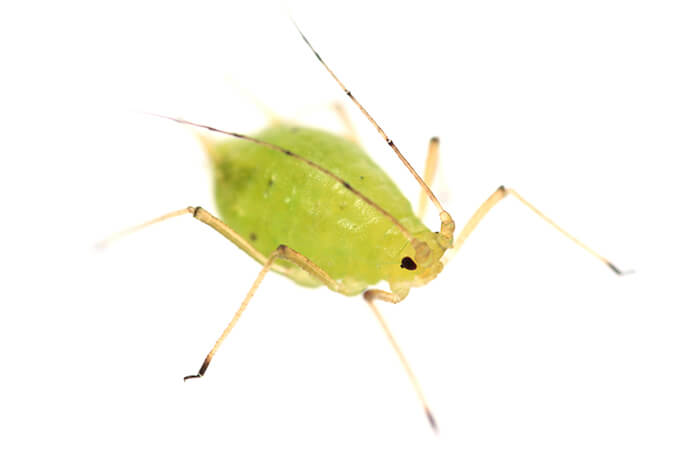
Aphids
What: Aphids are very small, soft-bodied, pear-shaped bugs that suck the fluids from leaves and flowers. They vary in color from green, yellow, orange, grey, black, or even white in appearance. Keep an eye on the underside of your plants’ leaves as that is their favorite habitat.
Damage: Leaves may turn yellow, begin shriveling or die suddenly. Aphids secrete a substance called honeydew which can make your plants sticky to the touch and increase the number of ants in the area. All of these are signs aphids have invaded.
Solutions: Neem oil and insecticidal soaps are the best control method when it comes to these insects.
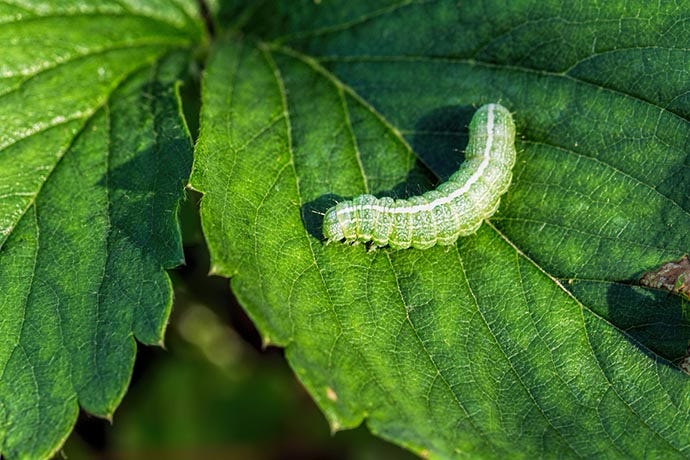
Caterpillars
What: Caterpillars are the larval stage of butterflies and moths and are found in a wide variety of sizes, colors, and shapes. The most common caterpillars and worms gardeners deal with are army worms, hornworms, cabbage loopers, and cutworms. Despite having worm in their names, many are actually caterpillars.
Damage: Caterpillars will eat leaves, stems, and sometimes entire plants. Keep an eye out for the appearance of holes in leaves or leafy crops. If you notice your plants’ leaves disappearing and signs of holes in plants start checking for caterpillars.
Solutions: Depending on how much time and effort you want to invest in your battle against caterpillars, there are a variety of options available. Hand picking is the most tedious but costs nothing. All you have to do is search, pluck and discard. Neem oil is also effective as well as purchasing natural caterpillar predators to do the work for you.
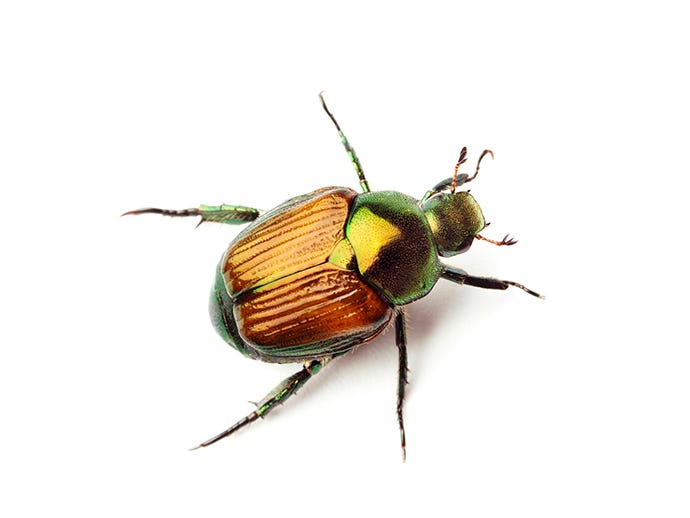
Japanese Beetles
What: Japanese beetles are small, only about ½” in length, and have blue-green bodies with a metallic sheen. Their larvae, grubs, are mostly found just under the surface of lawns.
Damage: These beetles are voracious eaters and cause major damage to leaves as they eat their way across plants. Leaves are usually eaten almost entirely, plants look skeletal, and blossoms are usually stunted. Grubs are also destructive as they eat the roots of grass. If your lawn has patches of dead grass, check for grubs.
Solutions: To get rid of Japanese beetles, you must treat the beetles as well as the grubs. Neem oil and bag traps are the most effective options for controlling adult japanese beetles. Treat a grub infestation with neem oil and create an environment that is not welcoming to grubs in your lawn and garden.
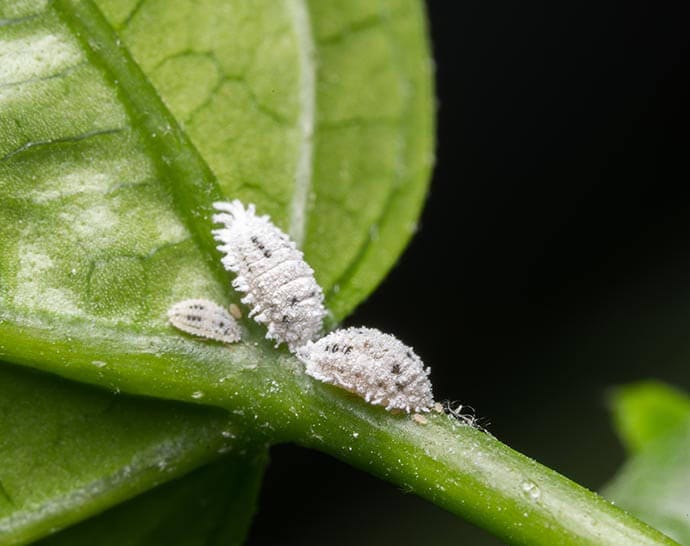
Mealybugs
What: Adult mealybugs are soft-bodied insects whose bodies are covered with a wax-like material which protects their eggs. They are most commonly found on potatoes, fruits, ornamentals, and tropical plants.
Damage: Symptoms of mealybug damage include yellow or withering leaves, inedible fruit that drops prematurely, presence of honeydew or death of the entire plant.
Solutions: Insecticidal soap and natural predators are your best defenses against these pest insects.
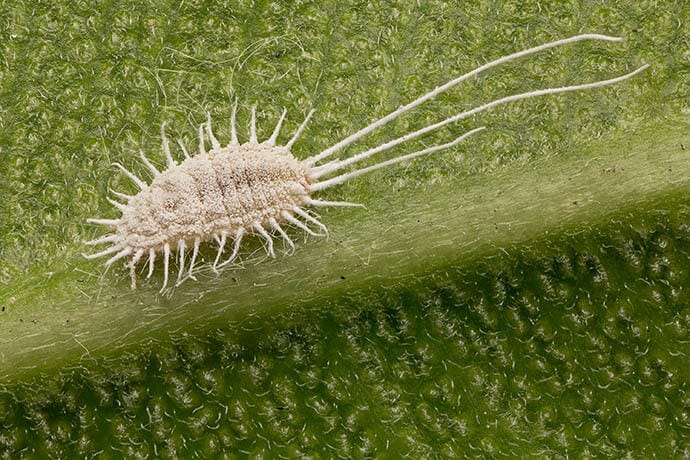
Scale
What: These small insects are found in two forms, soft-bodied and armored and are about 1/10 of an inch in diameter. They produce a waxy substance to protect their eggs which makes controlling them slightly difficult. Scale begin their lives fully mobile but lose their legs in later stages of development and remain on leaves for the rest of their lives.
Damage: Scale insects suck the sap or juices out of plants and their leaves leaving them vulnerable or sometimes unable to function. Leaves may turn yellow or fall off. Honeydew may appear as brown, red, or grey spots and mold may develop as a result.
Solutions: Neem oil and insecticidal soap are your best bet to achieving a scale-free garden.
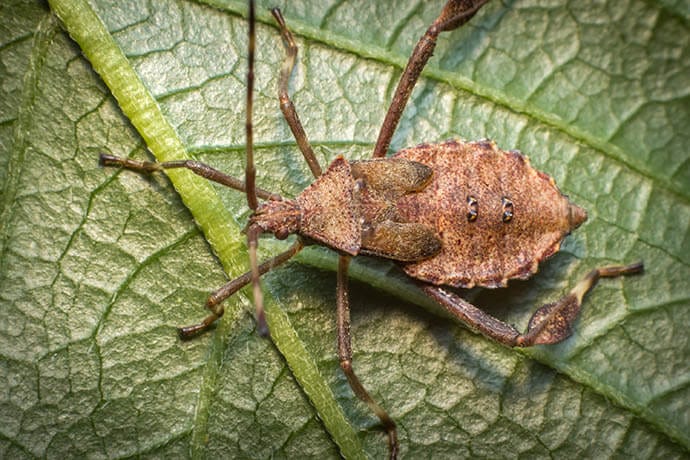
Squash Bugs
What: Squash bugs are brownish grey or black in appearance and grow to approximately ⅝” in length. They feed on plants, especially the leaves, from the gourd family including squash, pumpkins, and cucumbers.
Damage: Since squash bugs like to infest plants in groups, they can cause a lot of damage in a short period of time. The damage they leave behind can include blackened leaves or vines, the death of smaller plants, and prevent plants from bearing fruit.
Solutions: Insecticidal soap, the use of natural predators, hand picking, and barriers such as row covers are the most effective options to rid your garden of these pests.
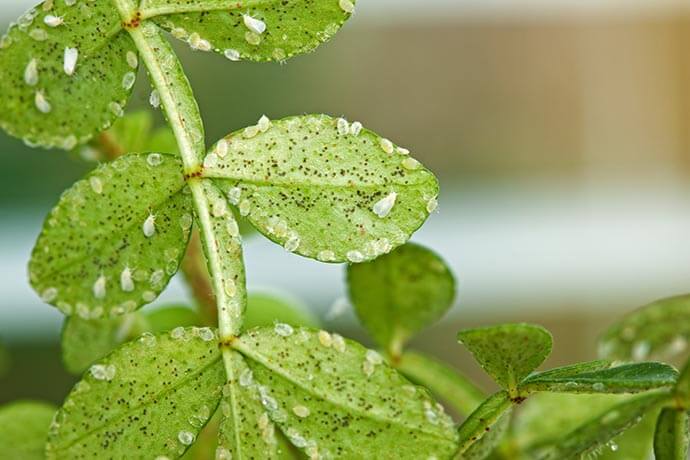
Whiteflies
What: These insects are white in appearance, but they are not flies and are more closely related to aphids. These insects also enjoy sucking the sap and juices from plants and resemble small moths. They often congregate in large numbers wherever they are feasting.
Damage: The removal of a plant’s juices leaves it vulnerable to disease. Combined with the presence of honeydew left behind by white flies, mold or fungus is common on plants infested with these pests.
Solutions: Insecticidal soaps, neem oil, and sticky traps are all highly effective ways to control these flying pests. Just remember to apply any sprays on the underside of leaves where they lay eggs.
Pest Control Solutions
When it comes to pest control, you want the best products available. Your garden needs solutions that are effective but also safe for the environment, so you can continue to grow a healthy garden. Read on to learn more about what products are available, how they work, and why they are so effective.
Organic vs. Synthetic
Choosing organic products over synthetic can make a world of difference in your garden. Synthetic/chemical products, while common, are not the smart choice when it comes to sustainability. Synthetic pesticides or insecticides contain chemicals that are not only harmful to your plants but also to the environment. They can cause leaf burning, pollute runoff and soil, and can make some fruits and vegetables dangerous to consume.
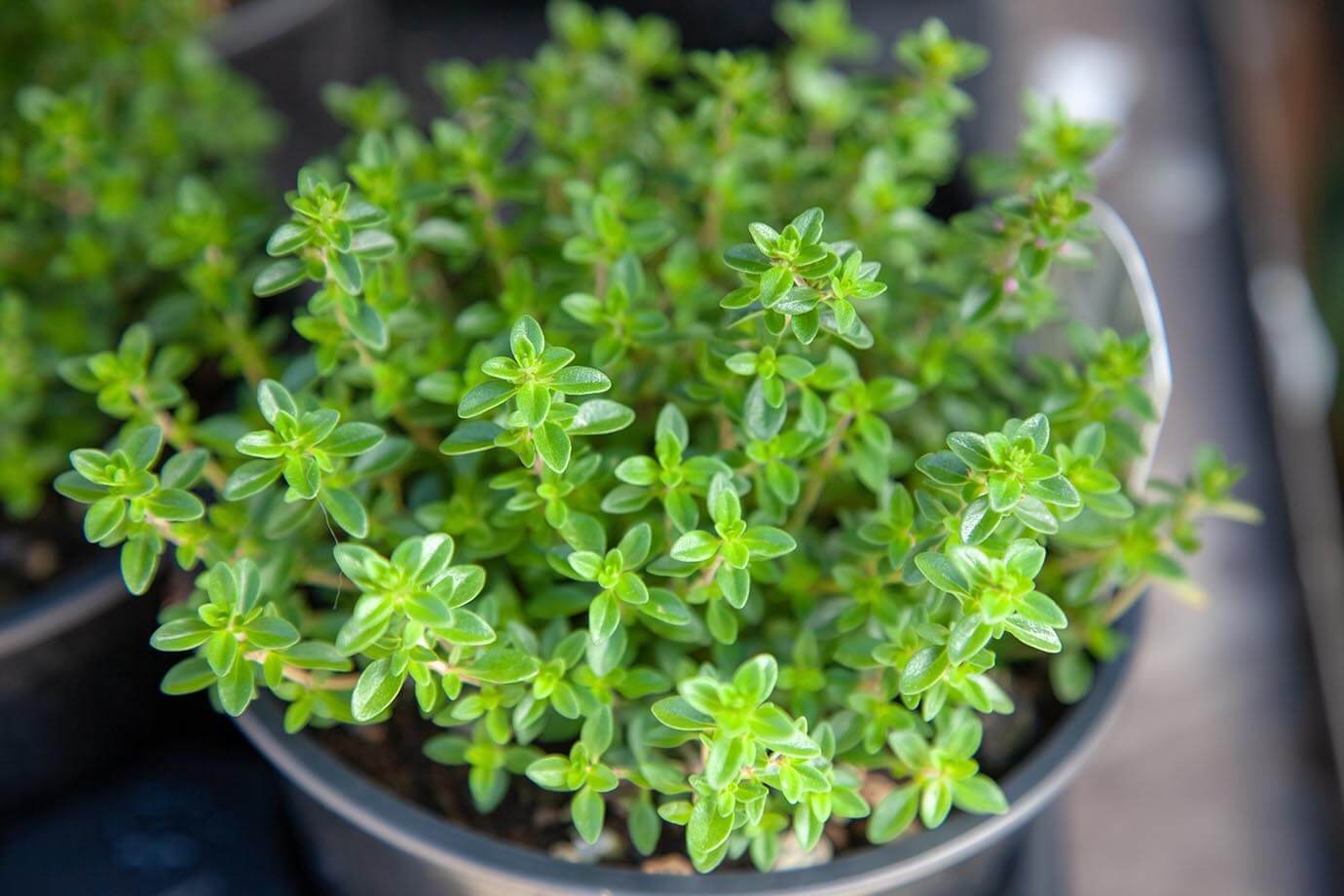
Organic products or those that are compliant with organic gardening, like OMRI ListedⓇ, are formulated with sustainability as a top priority. They contain no added chemicals that could harm the environment and are made with naturally-derived ingredients. Oftentimes, organic products contain nutrients that supplement plants’ needs to help them grow or become healthier as a result, making them an even smarter pest control choice.
Pest Repelling Plants
Luckily for us, some plants naturally contain pest repelling properties. The list could go on for pages, but here are the top plants to add to your garden to help repel pests without the use of any products.
| Plant Species | Prevents |
|---|---|
| Basil | Aphids, leafhoppers, mosquitoes, and whiteflies |
| Borage | Tomato hornworms and cabbage worms |
| Catnip | Aphids, beetles, caterpillars, and shield bugs |
| Chives | Aphids and thrips |
| Dill | Aphids, caterpillars, shield bugs, and spider mites |
| Lavender | Moths, fleas, flies, and mosquitoes |
| Marigold | Whiteflies |
| Mint | Aphids, beetles, caterpillars, shield bugs, and whiteflies |
| Nasturtium | Aphids, beetles, cabbage loopers, caterpillars, and shield bugs |
| Oregano | Aphids, leafhoppers, spider mites |
| Parsley | Aphids, striped parsley worm caterpillar, and white flies |
| Rosemary | Flies and mosquitoes |
| Rue | Cucumber beetles and flea beetles |
| Thyme | Cabbage looper, cabbage maggot, corn earworm, whiteflies, and tomato hornworms |
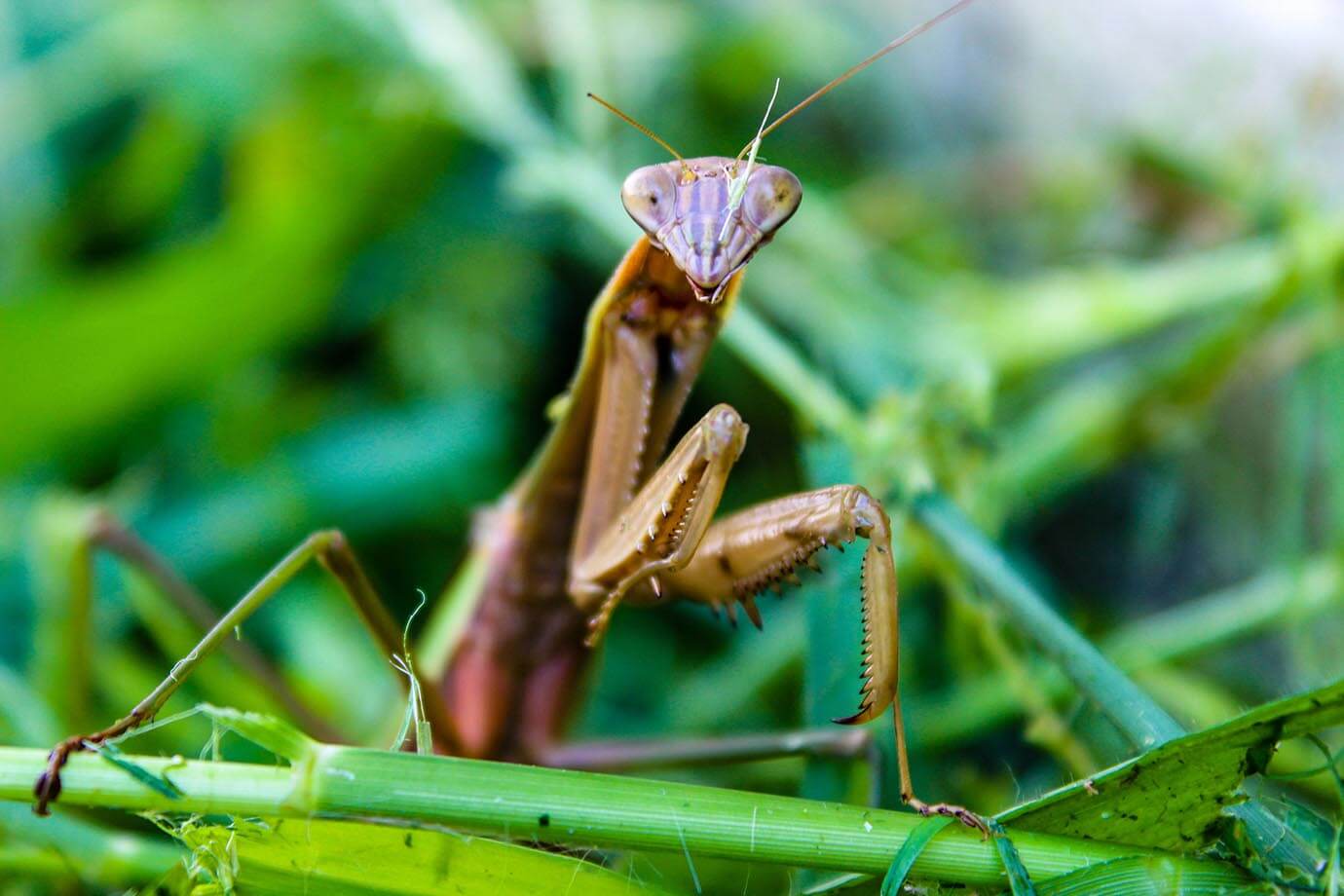
While this list is pretty long, it is by no means comprehensive. There are many more plants that will benefit your garden by not only repelling pest insects but by attracting bees and natural predators of the insects you want to eliminate. To take advantage of the repelling power of plants, simply choose the plant that repels the species that is plaguing your garden and plant it near your troubled plants. While they may not eliminate the pest insects completely, they will provide some benefit or relief.
Beneficial Insects
The most organic you can get when undertaking pest control is attracting natural predators of pest insects. Not only do they help take care of your problem, but they are oftentimes free or cost-effective and require almost no effort on your part. Many insects also help with pollination which contributes to the health of the ecosystem.
After you have identified which pests are eating their way through your flowers or crops, take a look at the list below to see which bugs will prey on those insects and what plants you can grow to attract those beneficial bugs.
| Insect | Preys On | Attracted By |
|---|---|---|
| Ladybug | Aphids, leafhoppers, mealy worms, mites | Dill, fennel |
| Praying Mantis | Beetles, caterpillars, crickets, and moths | Dill, marigolds, tall grass, shrubs |
| Spiders | Aphids, caterpillars, grasshoppers, and fruit flies | Easy access to areas where they can spin webs |
| Ground Beetles | Cabbage maggots, caterpillars, colorado potato beetles, cutworms, slugs, snails | Amaranthus, clover, compost piles, evening primrose, and perennials |
| Aphid Midges | Aphids | Dill, nectar & pollen producing plants |
| Braconid Wasps | Aphids, beetles, caterpillars, flies, and tomato hornworms | Nectar plants including common yarrow, dill, fern-leaf yarrow, parsley, and wild carrots |
| Damsel Bugs | Aphids, cabbage worms, caterpillars, and mites | Caraway, fennel, and spearmint |
| Green Lacewings | Aphids, leafhoppers, mealybugs, and whiteflies | Angelica, coriander, and dill |
| Minute Pirate Bugs | Aphids, spider mites, thrips, and some beneficial or harmless bugs | Alfalfa, daisies, fennel, and leaf piles |
| Soldier Beetles | Aphids, grasshopper eggs, and soft-shelled insects | Goldenrod, linden trees, marigolds, and zinnias |
| Tachinid Flies | Armyworms, cabbage loopers, cutworms, japanese beetles, sawflies, squash bugs, and tent caterpillars | Clover, dill, herbs, and parsley |
| Mealybug Destroyer | Mealybugs | Dill, fennel, goldenrod, and sunflowers |
| Predatory Mites | Mites | Presence of spider mites |
| Hoverflies | Aphids, caterpillars, scale insects | Common yarrow, dill, fern-leaf yarrow |
| Fungus Gnat Predator | Fungus gnat, gnat larvae, and spider mites | Presence of fungus gnats |
| Beneficial Nematodes | Caterpillars, corn rootworms, crane flies, cutworms, grubs, fungus gnats, and thrips | Healthy soil and the presence of pest insects |
You need bugs to grow a successful garden. Keeping your garden as natural as possible is essential for every part of the ecosystem to thrive. Insecticides do not discern between beneficial bugs and harmful ones so be sure to use caution when applying to your garden.
Find ways to create a garden that invites beneficial bugs so they can take care of the problem for you. Plant certain species that attract natural predators of pest insects, create a barrier around your garden with plants that repel certain bugs, and stay active in your garden to keep it clean and healthy. Spraying horticultural oil on plants before they bloom can also keep insect problems from getting out of hand.
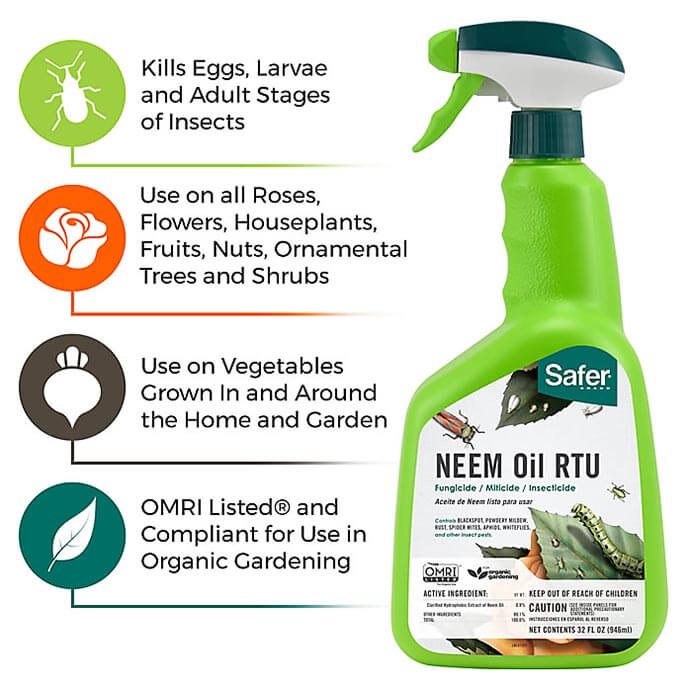
Neem Oil
Neem is a tropical, evergreen tree that originated in India. The oil is extracted from the tree’s seeds and purified to be used in many household products including soap, toothpaste, skincare products, and insecticides. The naturally-derived ingredient, azadirachtin, disrupts the insects’ hormones that allow them to progress to the next life stage.
As an insecticide, neem oil kills pests on contact, including eggs, larvae, and adults. In addition to its powerful reputation of eliminating pest insects, it also provides protection against certain fungal diseases including powdery mildew. Other added benefits of using neem oil include: safe to use around kids and pets, biodegradable, only targets leaf-sucking or chewing insects, does not bother beneficial insects, can be used indoors, and insects do not become resistant to it.
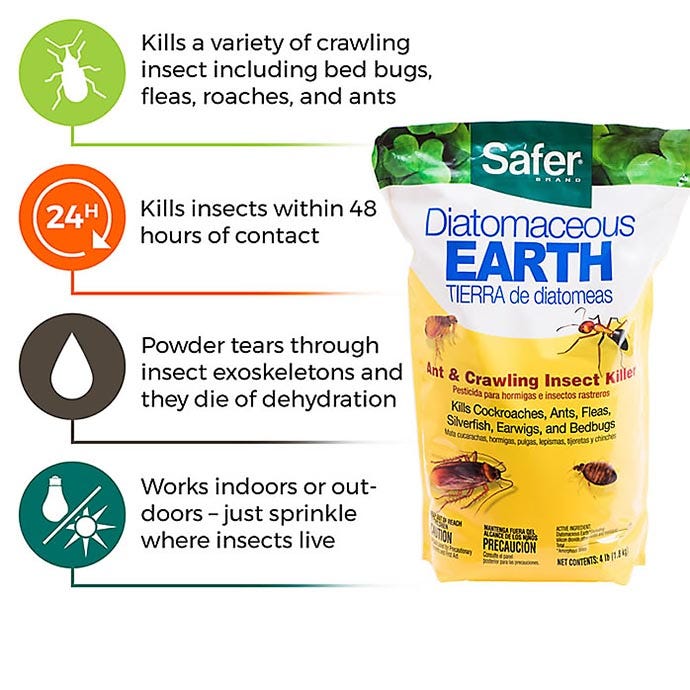
Diatomaceous Earth
Diatomaceous earth is another product that can be used for many different applications such as toothpaste, water filters, dynamite, and pest control. DE is made from 100% natural materials and diatomites. They are rough, fossilized mineral deposits of diatoms.
When used in pest control, they are extremely effective especially against crawling insects such as fleas, squash bugs, thrips, ants, mites, and beetles. Although the powder feels soft to the touch to humans, it is razor sharp to insects. To use in your garden, simply sprinkle on or around plants to protect them from crawling insects.
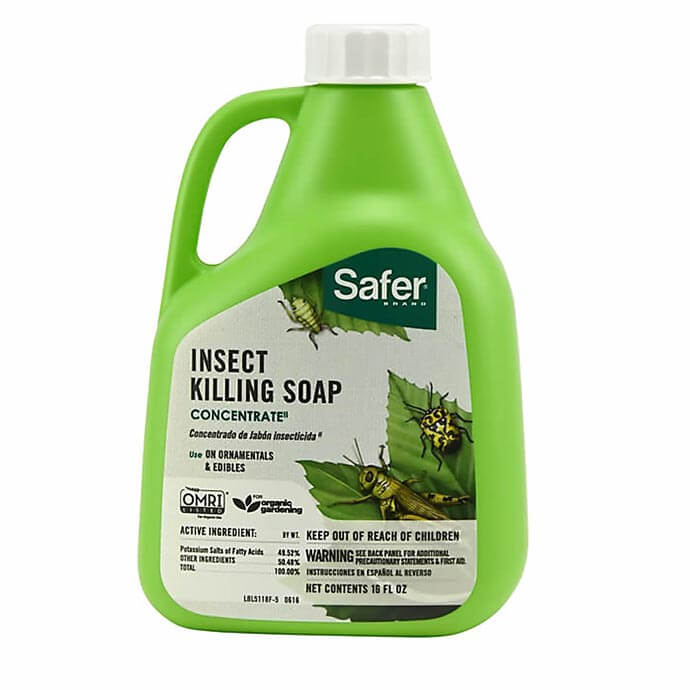
Insecticidal Soap
Unlike the soap you use on your dishes, insecticidal soap is formulated to control a variety of insects. If you have aphids, earwigs, mites, mealybugs, grasshoppers, scale insects, thrips, whiteflies and more, insecticidal soap is a smart choice. However, the soap only works on insects at specific stages of development. How well the product works depends on the species’ current stage in life. Always read the product label to find out which insect stage will be most susceptible to the soap.
Insecticidal soaps break down the outer shell of an insect and work on contact. If the soap dries before the insect has time to encounter it, it will have no effect. These soaps break down naturally and contain no synthetic chemicals that could pollute waterways or harm your plants. Unlike synthetic insecticides, they are safe to use around kids and pets when used as directed.
Common Non-Insect Pests & Signs of Their Damage
Deer
What: Chances are if you have a garden, you’ve wished you had a strategy to repel or keep them away from your plants. Deer love to eat and even lay down in gardens which can undo weeks of work in a matter of minutes.
Damage: These large creatures have seemingly bottomless appetites. They will happily munch on almost any plant in your garden. Deer can decimate a garden in less than a day if left to their own devices.
Solutions: Ridding your garden of deer requires diligence, but it is not impossible with an integrated approach. For the best results, use a variety of repellents to keep them guessing. Effective deer repellents include sprays that target their sense of taste and smell, motion-activated repellents that squirt a surprising jet of water as they pass nearby, and weatherproof repelling stations that deter deer by scent.
Moles & Gophers
What: Moles and gophers are ground-dwelling creatures that create unsightly burrows or mounds in your garden or lawn. They live below the surface of your yard and tunnel in search of food which can cause widespread damage.
Damage: Moles and gophers are notorious for their appetite and their tunneling abilities. While moles will not eat your garden crops or flowers, they will rip up your lawn and garden in their search for earthworms. Their tunnels can uproot plants and even cause them to die. Gophers love to eat your plants. They will not only burrow and tunnel into your garden causing damage that way, but they will eat whatever they come across.
Solutions: Luckily, there are many solutions available to you that can rid your garden of these pests. Repellents, traps, sonic spikes, and poisons are the most common ways to rid your garden of these pests.
Rabbits
What: Rabbits might be small, but they can cause damage to flowers, food crops, trees, and more. These critters love areas that provide tall grass or excessive plant growth that they can use for shelter or protection.
Damage: There are very few plants in your garden that rabbits will choose to ignore, but they are easy to identify based on the damage they leave behind. If you’ve noticed flowers, clover, or alfalfa disappearing, damage to tender crops like beans, peas, cabbage, or lettuce, girdling on the bark of trees, or gnaw marks on woody plants or twigs, you most likely have a rabbit problem.
Solutions: Don’t worry, there are plenty of options available to help you regain control of your garden plants. Liquid and granular repellents repel by scent and taste, weatherproof repelling stations tap into a rabbit’s natural avoidance of predators, fencing or other barriers physically prevent rabbits from entering most spaces, electronic repellents startle rabbits and keep them away with a surprising burst of water, and humane traps help you transport them out of your garden.
Slugs & Snails
What: Slugs and snails are closely related but their most obvious difference is snails have a shell and slugs do not. Both species love moist environments and have large appetites for their small bodies. These herbivorous creatures love to chow down on your gardens and lawn.
Damage: If you notice evidence of chewing on vegetables, fruits, leafy plants, and seedlings as well as the presence of some slime, you’re mostly likely dealing with a slug, snail or both.
Solutions: The best way to rid your garden of these slimy creatures is using a combination of the following: hand picking, natural predators, removing moist areas, diatomaceous earth, barriers and slug & snail killers.
Solutions
There are so many insects and animals that can invade your garden, it’s hard to always know which method is best for which animal. Without a doubt, using an integrated approach will give you more effective results. The more repellent or trapping methods you use, the less you will need to worry about your garden being under almost constant attack by creatures large and small. Take a look below to see just what is available and how to get rid of your pests for good.
| Type | Best Used For | Where To Use | How it Repels |
|---|---|---|---|
| Liquid | Cats, dogs, raccoons, skunks, and squirrels | Use on garbage bins, plants, mulch, and other outdoor surfaces | Scent and taste |
| Granular | Cats, chipmunks, dogs, groundhogs, raccoons, skunks, and squirrels | Apply as border protection around areas you wish to protect. | Scent and taste |
| Motion-Activated | Birds, cats, chipmunks, deer, dogs, groundhogs, opossums, rabbits, raccoons, skunks, and squirrels | Anywhere in lawn or garden | Startling spray of water conditions animals to stay away |
| Sonic Spikes | Moles and gophers | Anywhere in lawn or garden | Ultrasonic noise |
| Weatherproof Station | Deer and rabbits | Anywhere in lawn or garden | Scent |
| Electronic Poles | Deer | Anywhere in lawn or garden | Mild shock conditions deer to avoid the area |
Fencing/Barriers
It might not be the most attractive choice, but man oh man is it effective. Creatures large and small will find it much more difficult to enter the protected areas and will mostly likely go in search of an easier meal.
Fences are not your only choice when it comes to blocking animals from entering an area. Raised gardens prevent tunneling or burrowing creatures like moles and gophers from devouring the roots of plants or knocking them over. Certain kinds of landscaping, such as terracing or adding row covers, can make it much more difficult for animals to reach the food or plant you’re trying to keep away from hungry pests.
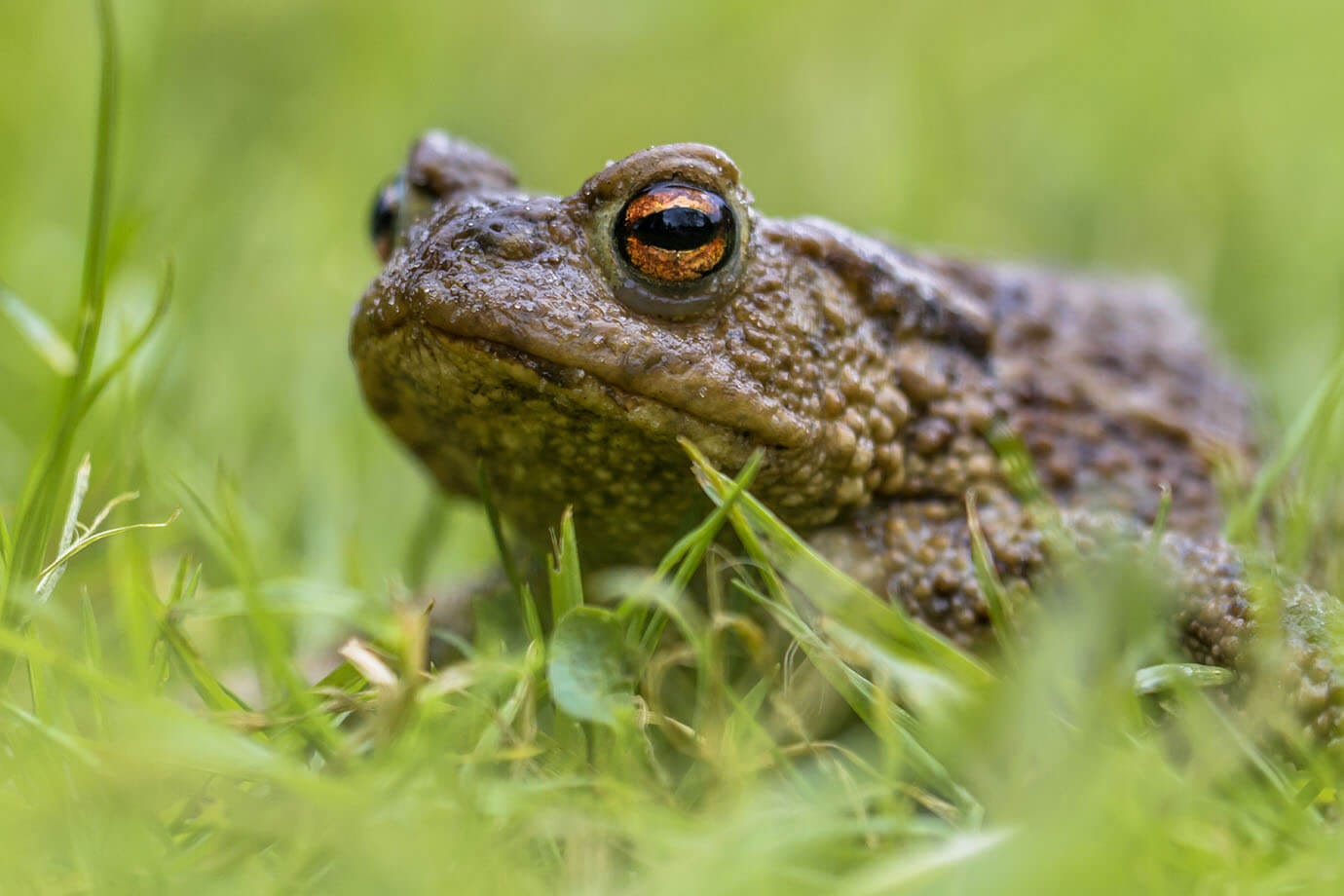
Beneficial Non-Insect Animals
We already learned about beneficial insects and how they positively impact our control over pest insects in gardens. However, they are not your only options when it comes to beneficial living creatures. Keep your garden pest issues in check with these non-insect animals.
- Toads – These amphibians are found in every state in the USA and are a natural predator of many different species of insects. They will also leave your garden unscathed as they only chow down on insects and worms!
- Earthworms – They won’t eat other insects but they will contribute to the health of your soil. Nutrient dense soil will usually have a vibrant population of earthworms who fertilize it with their waste, making your garden better able to defend itself against disease.
- Baby Chicks – While they are young, chickens will eat the insects in your garden and ignore the plants. As they get older, they will start to eat your fruits, vegetables, etc, so make sure to separate them from your garden before they realize there are more snacks available than the bugs!
- Guinea Fowl – Not only will they protect your yard from invading animals and even humans, guinea fowl are known for their insect extermination skills. They will eat small rodents, flies, grasshoppers, crickets, and are tick eating machines.
Prevention Tips – Creating a Healthy Ecosystem
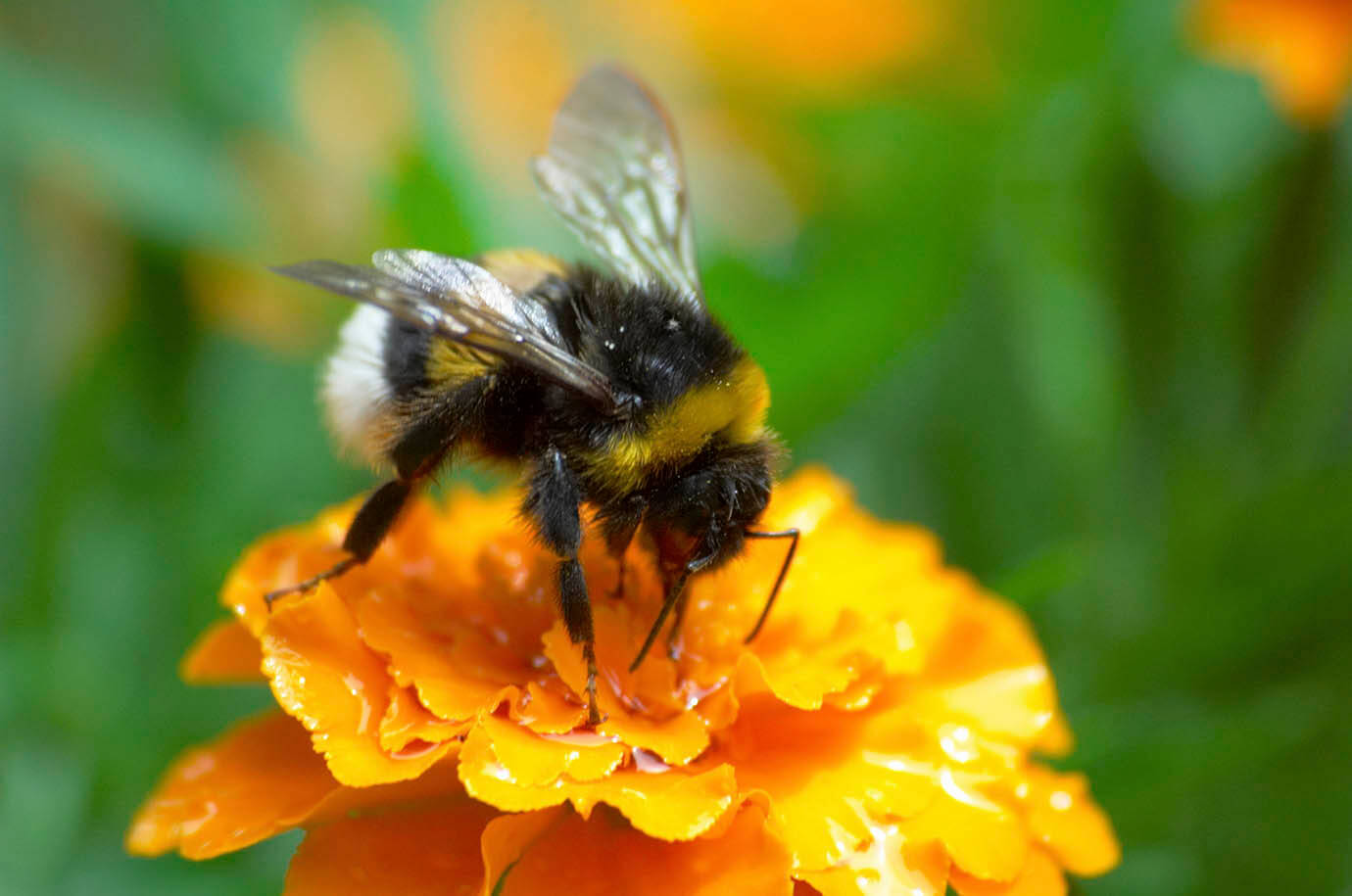
Your garden is already equipped with its own defense system. All we have to do is help. By creating a garden where the soil and plants are both healthy we can prevent disease and pests from completely taking over. Here are a few ways you can prevent an insect infestation while also keeping your plants as healthy as possible.
- Attract Pollinators – Most plants need insects to pollinate them so they can reproduce. Pesticides and a toxic environment will discourage these important insects and damage the health of your garden. Flowers and nectar bearing plants help attract natural insect predators to help keep pests away.
- Attract Birds – Birds find bugs delicious. Add a bird bath or other water source as well as feeders to your yard to attract them. Some birds will peck away at your fruits but most will be more attracted to the insects for an easy meal.
- Pull Infested Plants – These plants are easy targets for insects and may even attract other pests. Make sure to dispose of it well away from your garden area.
- Rotate Crops – Many insects target specific types of plants. Plant different species each year to prevent the same bug from infesting your garden or spreading to other plants year after year.
- Keep Plants Dry – Water your garden earlier in the day. Wet leaves encourage fungi and insects to invade.
- Don’t Overcrowd – Growing a large number of plants in one area can be an invitation for disaster. The last thing you want to do is give insects easy access to your entire garden by planting everything too close together. Giving plants more space also allows more air flow between plants which prevents fungi.
- Minimize Debris – Insects love to breed in weeds or other plant matter. Keep your garden tidy and well-maintained to discourage them. Mulch is also a great alternative if you’re short on time.
- Go Organic – Creating a healthy garden is one of the best defenses you can build for your garden. Keep your plants and soil free from harmful chemicals and be mindful of what you put on your plants.

